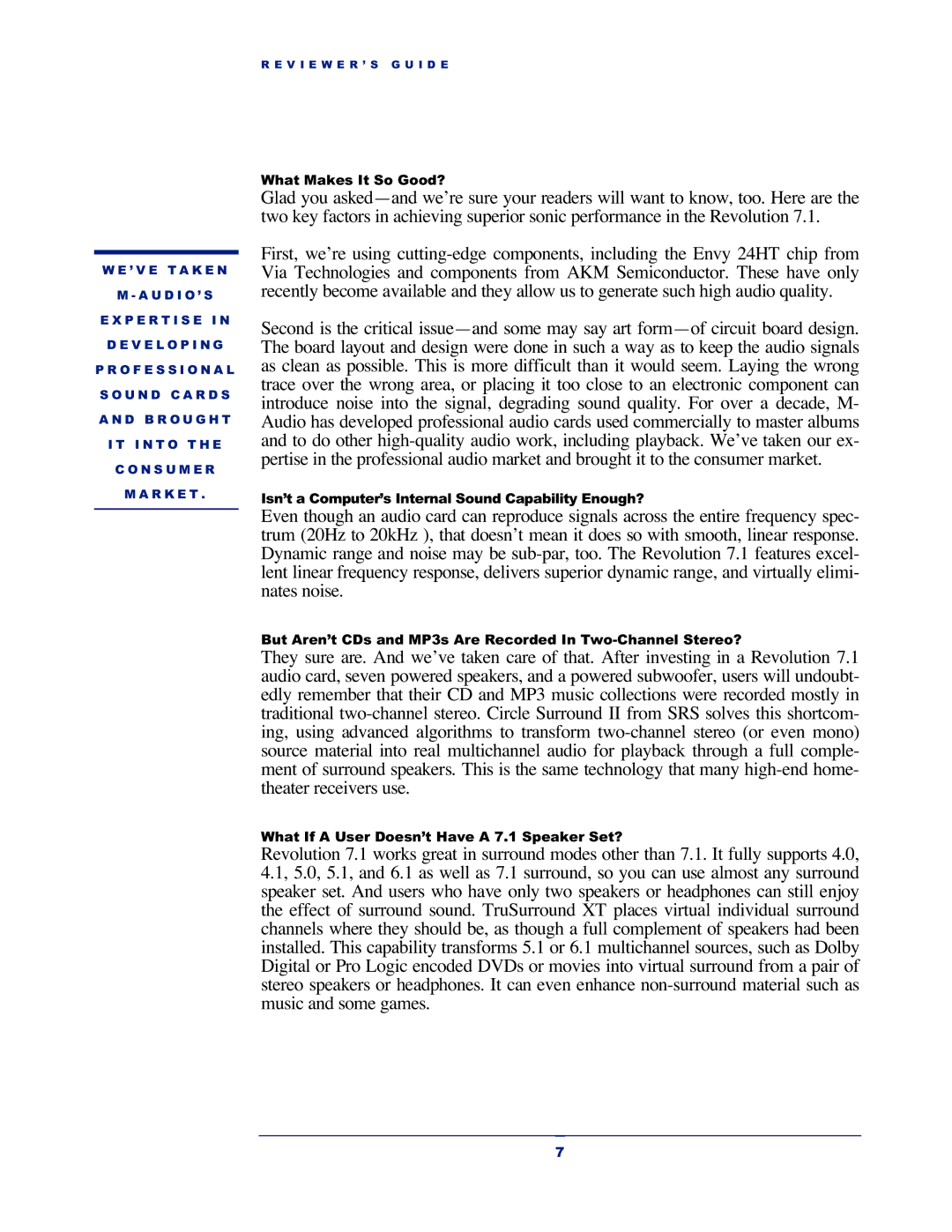
R E V I E W E R ’ S G U I D E
W E ’ V E T A K E N
M - A U D I O ’ S
E X P E R T I S E I N
D E V E L O P I N G
P R O F E S S I O N A L S O U N D C A R D S A N D B R O U G H T I T I N T O T H E
C O N S U M E R
M A R K E T .
What Makes It So Good?
Glad you
First, we’re using
Second is the critical
Isn’t a Computer’s Internal Sound Capability Enough?
Even though an audio card can reproduce signals across the entire frequency spec- trum (20Hz to 20kHz ), that doesn’t mean it does so with smooth, linear response. Dynamic range and noise may be
But Aren’t CDs and MP3s Are Recorded In
They sure are. And we’ve taken care of that. After investing in a Revolution 7.1 audio card, seven powered speakers, and a powered subwoofer, users will undoubt- edly remember that their CD and MP3 music collections were recorded mostly in traditional
What If A User Doesn’t Have A 7.1 Speaker Set?
Revolution 7.1 works great in surround modes other than 7.1. It fully supports 4.0, 4.1, 5.0, 5.1, and 6.1 as well as 7.1 surround, so you can use almost any surround speaker set. And users who have only two speakers or headphones can still enjoy the effect of surround sound. TruSurround XT places virtual individual surround channels where they should be, as though a full complement of speakers had been installed. This capability transforms 5.1 or 6.1 multichannel sources, such as Dolby Digital or Pro Logic encoded DVDs or movies into virtual surround from a pair of stereo speakers or headphones. It can even enhance
7
